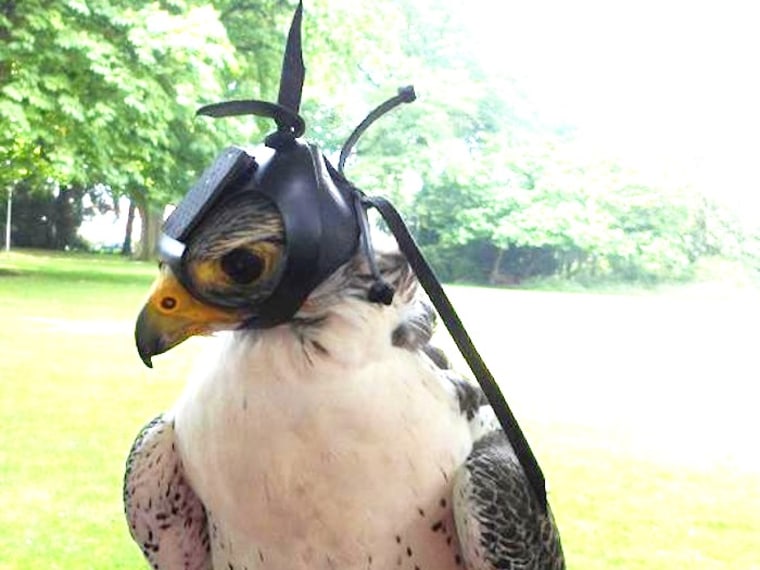When falcons swoop through the air and spot a flock of birds, these crafty predators use a special aerial attack strategy to capture prey in midflight, according to a new study.
To gain insight into the hunting practices of falcons, researchers at Haverford College in Pennsylvania outfitted falcons across the United States and Europe with miniature helmet- and backpack-mounted video cameras to record footage of raptor attacks in action.
The resulting video footage revealed that falcons stalk their prey by maneuvering through the air in such a way that the target appears stationary in their field of view. This lethal attack strategy, described online on Wednesday in the Journal of Experimental Biology, helps falcons effectively intercept their prey without having to tail closely behind their victims. [In Photos: Amazing Birds of Prey]
The researchers initially set out to examine the opposite effect: how animals react to the aerial onslaughts of falcons and other airborne predators. They changed their focus when they saw that there had been little progress in understanding falcon hunting strategies and attack behaviors.
"We went back into the scientific literature to see what had been uncovered about how falcons and other raptors pursue and target prey," said study lead author Suzanne Amador Kane, an associate professor of physics at Haverford College. "We learned, to our surprise, that this problem has not been resolved."
Follow the falcons
Taking a cue from the world of "critter cams," Kane joined forces with falconers around the world to capture raw footage of aerial attacks from the falcons' point of view. Kane likens the equipment to tiny GoPro cameras, a brand of small, durable cameras popular in adventure photography. The recording devices were attached to helmets and backpacks that are worn by the falcons as they fly.
"They work like standard cameras in high-definition, and they have very good resolution, so we got sharp pictures," Kane told LiveScience. "The falconers we worked with made custom hoods so that the cameras were snug but didn't impede vision. We had some birds who didn't want to wear them, but overall most were unconcerned with the cameras and tolerated the equipment just fine."
Footage was collected from falcons in Belgium, the Netherlands and Britain, and in states as diverse as Pennsylvania, Arizona and Wyoming. The findings incorporate data from eight different falcons.
From the raw materials, the researchers painstakingly logged the position of the falcons in each frame, then reconstructed the various pursuits. By comparing the position of the targets in the falcons' visual field, the scientists were able to map and simulate the birds' flight path.
Plan of attack
If the victim consistently appeared at the center of the falcon's field of view, the predator was probably following the prey, shadowing its every move. While this is the simplest way for one animal to track another, the researchers discovered that falcons use more complex tactics to hunt, Kane said.
"This strategy of heading straight toward the prey at all times is easy to implement, but it involves following a very winding pathway, and it turns out to be a very inefficient way of catching prey," she explained.
Instead, falcons tend to train their eyes on their victims by constantly readjusting their flying position so that the prey appears motionless against the background. This helps them to effectively predict the future position of their prey, which enables the large birds to head off and intercept their victims in the least amount of time, Kane said.
"Every time the prey maneuvers, the predator has to readjust its position," she said. "We saw falcons do a series of fixes to keep the prey at the same angle in the camera's field of view."
Previous research on dragonflies and bats found similar uses of this type of attack strategy. "There seems to be an evolving picture here," Kane said.
The researchers intend to investigate other aspects of falcon hunting behavior, including how predators choose which bird to target in a flock. Kane and her colleagues are also interested in examining whether prey animals are influenced by the hunting strategy displayed by falcons.
"What are the prey doing in response?" Kane said. "In the past, people thought prey might just be trying to outmaneuver the predators, but are they actually trying to thwart this visual strategy?"
Follow Denise Chow on Twitter @denisechow. Follow LiveScience @livescience, Facebook and Google+. Original article on LiveScience.
